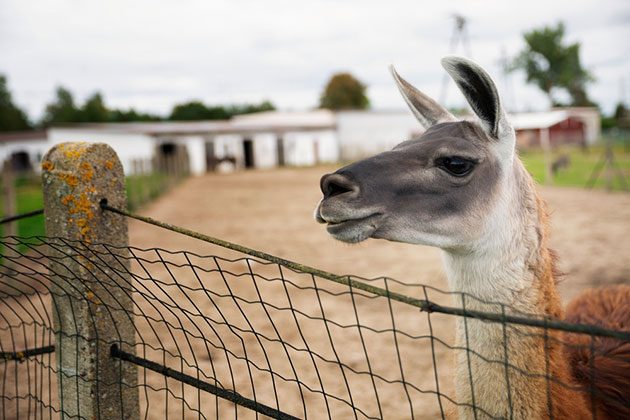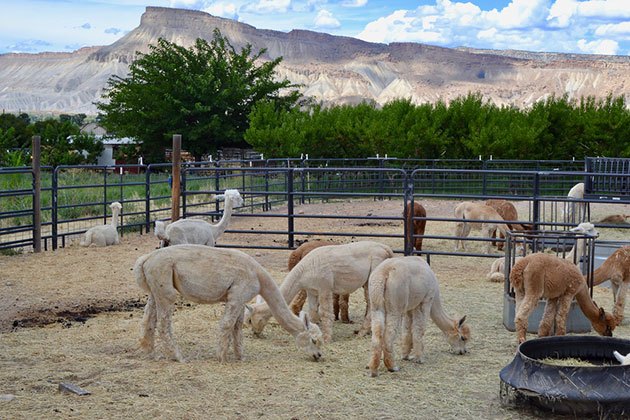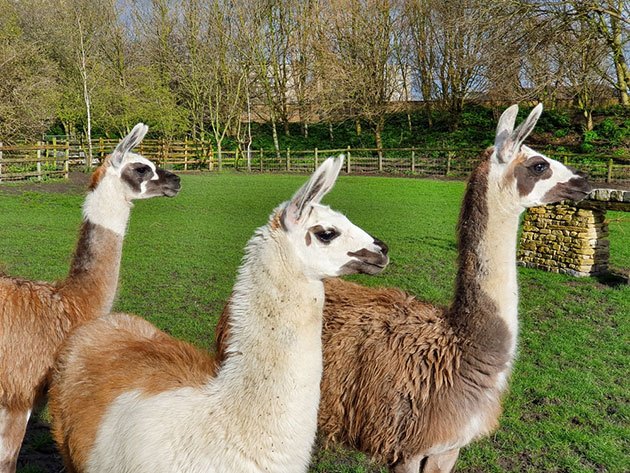Some animals require taller electric fences than others. The same goes for llamas and alpacas.
They are known for their thick fur coats and other unique features. So, to keep them safe, you must plan your electric fencing thoroughly.
And how will you do so?
First, examine the guide & find the best electric fence for llamas and alpacas!
Can you enclose llamas and alpacas?

These animals are very active and curious, so they can roam around your farm, barn, or other areas to inspect the terrain and push the limits.
They are closely related to goats and sheep, so you need correct fencing to keep them blocked inside the confinement. They won’t slip through the fences like their relatives.
But they are friendly, and you can easily control them.
Planning an electric garden fence for alpacas & llamas: The basics
When it comes to building a specific structure for llamas and alpacas, you should ask yourself three questions before the final electric fence installation:
- Can predators & what kind of predators jeopardize the safety of the animals?
- Will you have young crias with adult animals inside the fencing?
- Will you enclose male and female llamas and alpacas inside the electric fencing?
For those with both male and female llamas and alpacas together inside the fences, it would be best to keep them separate.
Another big plus is to keep baby llamas separate from the llama and alpaca adults, as the fencing might be too dangerous for them.
The babies might get caught in the fence and cannot escape easily.
This may happen because you aim at specific predators to scare them off and keep your alpaca llama herds safe, secure, and protected inside the correctly installed fencing.
However, once you determine the suitable animals you want to protect or chase away, you will choose different fence types to best suit your needs.
Although adult herd animals might kick predators as a defense, there are specific persistent beasts – coyotes, dogs, wolves, etc., attempting to ruin the security and bother your herds.
Crias are too small to figure out the best way to fight back, so they will be in the most significant danger. They will be more susceptible to beasts.
The moment the predators notice them, they might jump over to eat them.
What’s the best fence for llamas and alpacas?

When determining the best size and height of the alpaca and llama fencing, you must consider different factors to pick the best solution. These include:
- feeding style
- shoulder height
- intelligence
- activity
- type of coat.
Since they are sociable, both alpacas and llamas are friendly with others and are easy to train and control.
However, both species have thick fur. Therefore, it will be hard to conduct electricity correctly.
But, besides this, they are bright and will respect the fence once you install it at the proper location.
How to set up a llama fence?

You must determine what type of fence you want. It can be either temporary, semi-permanent, or permanent fencing. So, think about whether you will move it around or not.
Remember that alpaca and llama herds are taller. Therefore, the best fence should also be taller to meet their shoulders.
At least 5 feet tall, the best fencing, or even taller, to prevent llamas and alpacas from jumping over the fence.
It would be best to install high-tensile fencing for more safety and protection. Depending on the factors mentioned above, the fence wires might range between 4 and 6.
Regarding the spacing of the wires, experts suggest the following measurements:
- 6 wire strands for young crias
- 4 wire strands for adult llamas and alpacas
If you don’t like the regular wire system, you can use the woven wire mechanism.
The woven wire system handles fallen tree limbs and similar objects better than other fencing types. It will be more solid and durable for projects. Choose woven wire for your peace of mind.
Concerning fence chargers, the best fence chargers should maintain between 4,000 and 5,000 volts of power on the fence line.
This way, you will be able to protect your llama pasture, farm, or other areas from predators and keep the animals safe.
So, the minimum voltage required to keep the beasts away is 5,000 volts.
You must also think of the vegetation surrounding your llama fences.
Regular maintenance and cleaning of your farm, pasture, or any other area will make the fence work optimally. If not, the fence won’t be productive.
Vegetation will affect the voltage levels, so pay attention to regular maintenance.
To build a fence properly, you need to place the fence posts every 16 to 32 feet. The closer the posts, the stronger the llama fencing will be.
According to the size of alpacas and llamas, you can select 3 or 4 feet posts. And add more posts around the undulating ground or corners and fewer posts on longer flat stretchers.
But, if you’re in doubt, install taller posts.
You will also need 4 heart-to-heart connectors to make every fence line live.
You could also run twine between the wire strands and lines if you like. But, my advice is not to do so since you may not connect it properly & make your fencing less effective.
Another crucial component is a fence tester. It will test your fence lines and overall construction and find errors for immediate corrections.
It can be a mains energizer regarding your fence energizer, but you must have a high-voltage lead-out wire. You will also need a ground stake for it.
The high-tensile wire must be long enough to link the plug-in point of the energizer and the start of the fencing. Thus, it will create the necessary power and current flows through the line.
Then, the energizer should be installed to meet the earth stake and placed near the start of the farm fencing.
And, if your high-tensile wire runs along the ground, ensure you cover it with a hose or a water piping for better protection.
You also may or may not need insulators, deepening on the posts you will use. For example, you’ll need 5 insulators per post for wooden posts.
But, you can also go with some other models, such as fiberglass, T-posts, and other units that will keep the construction and line just fine.
If you use a 12-volt charger, you will need a 12-volt battery. Some chargers require extended battery life and charging; others – solar chargers do not.
Solar units require direct sunlight to charge the battery with the solar panel and save yourself constant labor.
Here you can find the best battery and charger for optimal performance. Or check them on Amazon.
You can also add 5 gate handles to ensure the farm fencing provides easy access and entry.
You can clip them on wooden or plastic posts, but you must add extra 5 anchors for wooden models.
Another great idea is to apply specific twine connectors. You can protect and secure the fencing gate handles and connect two pieces of twine effortlessly.
For optimal performance, it would help to use 10 or so.
My advice for you is not to tie knots on the fencing, as it might reduce the electric flow on your line. This way, you cannot stop the herd from escaping or predators intruding.
Summary
As you see, an electric garden fence for llamas provides various benefits for your herds.
But, first, you need to prevent the captive animals from jumping over and respecting boundaries.
It might be easier said than done, yet llamas are not demanding when it comes to training sessions.
